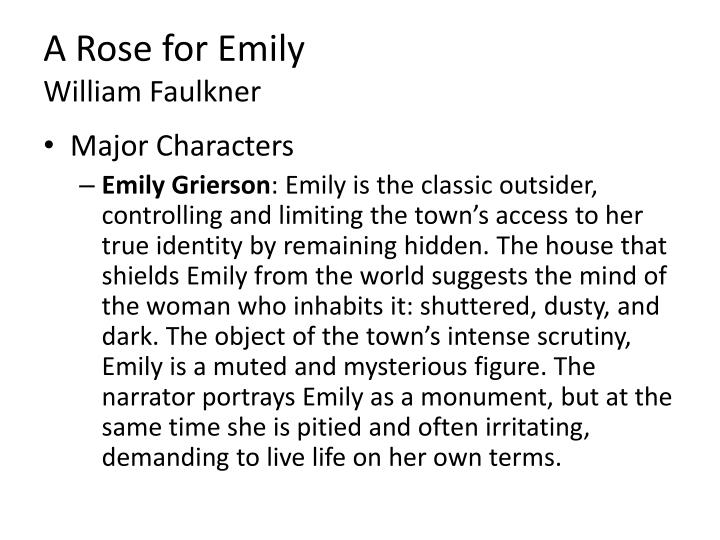
Obviously there are many other stories that belong on this list, and I’m sure there are teachers judging me over my inclusion or exclusion of some. You can find “The Story of an Hour” in almost any literature anthology, or online here. It’s also great for a solo study and focusing on symbolism or plot structure. If not, it’s a great introductory or paired text with Jane Eyre, Pride and Prejudice, or another 18 th century text with a strong, modern heroine. I suggest pairing this with HTRLLAP if you’re using it. Is it possible, they think, that this woman is more modern than I realized? Could she possibly be happy that she’s not just a wife anymore? If that isn’t interesting enough, it’s the sudden and ironic ending that really gets me. However, once she gets in front of the window and has her taboo delight in the thoughts of freedom, I see my students sit up a little straighter. Yeah, she must grieve in private, they mutter, as she’s weak. Of course, they think, another 18 th century heroine, driven completely by the life and will of her husband. I like teaching this story because my students think they have it figured out just one paragraph in. “A Rose for Emily” by William FaulknerĪnother popular AP Lit short story is “The Story of an Hour.” This is another short one, and frequently used at the beginning of the year. “Girl” is available to read from The New Yorker here. For lesson materials on “Girl,” this short story boot camp lesson pairs it with “Everyday Use” in a study of characterization. Another strategy is pair it with a similar text with parent-child conflicts ( A Raisin in the Sun and Fences both come to mind). Pair this text with skills that have to do with dialogue, characterization, or structure. I also love picking apart the tone of the narrator, who scolds her daughter and accuses her of being a slut, all the while establishing that she does it because she loves her. Kincaid’s lyrical style in this text is poem-like, making it a challenge even if it is short. We even have time to read it a third time once we’ve assigned some AP Lit skills or themes for analysis. I often read it aloud, then ask students to read it again immediately after. It’s actually for that reason that I love teaching it. This one is as short as Sonny is long (only a 3 minute read). “Sonny’s Blues” by James BaldwinĬontrasting “Sonny’s Blues” is “Girl” by Jamaica Kincaid. Check out that lesson here, which pairs it with another favorite, “Lamb to the Slaughter” by Roald Dahl.


This story takes about 21 minutes to read.

I use it to analyze plot structure and sequencing, a difficult skill to target. “The Veldt” – Of these three, I find this story about a child’s nursery-gone-mad the most challenging. This story takes about 10 minutes to read. Furthermore, it easily pairs with the poem that shares its name by Sara Teasdale. I love to focus on setting and theme, which leads to analysis of conflict as well. “There Will Come Soft Rains” – This is my favorite of Bradbury’s short stories. This story takes about 20 minutes to read. While the plot is thrilling, it’s really the analysis of the details in this one that makes it AP-worthy. “The Sound of Thunder” – This story mixes time travel with tourism in an exciting tale. The three Bradbury texts I see suggested for AP Lit the most are these: Most students read Fahrenheit 451 earlier in their high school career, but I love introducing them to his short stories as well. I couldn’t find a single Bradbury text that rose higher than others, so I’d just suggest including at least one. “A Good Man is Hard to Find” by Flannery O’ConnorĪnother master of the short story form is Ray Bradbury. The story is pretty short, only a seven minute read. This is a story you can teach and return to over and over again throughout the year. Once students understand the taboo topic that drives the conversation, they’re eager to read it again and analyze it. However, Hemingway’s sparse narrative style and unique choices in dialogue are an excellent opportunity to teach subtext. Most have no idea what is going on, which is exactly what you would expect.

I love watching my students discuss this story after a cold read. Not only is it rich with literary elements for analysis, the story has this wonderful “What the heck?” element to it. I paired it with setting in this Skill Spotlight lesson. You could literally grab a skill at random and make it work for this story. Of all the Skill Spotlight lessons I’ve written, “Hills Like White Elephants” is by far the most recommended by AP Lit teachers for the skills in the CED.


 0 kommentar(er)
0 kommentar(er)
